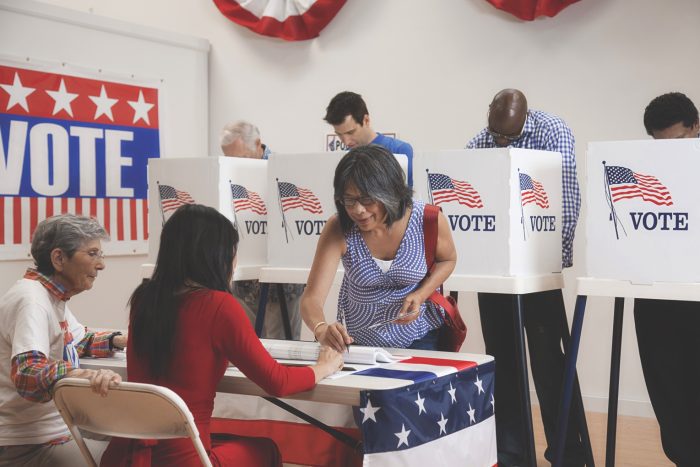By Heidi Sutton
Summer is right around the corner and that means strawberry season on Long Island. With a variety of gorgeous fresh fruits at your fingertips, why not whip up a fabulous sweet dessert to surprise family or share with friends?
Chocolate and Strawberry Greek Yogurt Bark – SEE VIDEO HERE
Recipe courtesy of Milk Means More

YIELD: Makes 8 servings
INGREDIENTS:
3 cups plain non-fat Greek yogurt
1/3 cup honey plus additional for drizzling, divided (optional)
1 teaspoon vanilla
1/4 cup melted dark chocolate
1/2 cup strawberries
1/2 cup dark chocolate chips
DIRECTIONS:
In medium bowl, combine Greek yogurt, honey and vanilla. On parchment-lined baking sheet, spread Greek yogurt mixture to 1/4-inch thickness. Drop spoonfuls of melted chocolate onto yogurt and use toothpick to drag in circles. Press strawberries and chocolate chips into yogurt.
Freeze at least 3 hours. Remove from freezer and break into pieces.
Strawberry Chiffon Pie
Recipe courtesy of Culinary.net

YIELD: Makes 8 servings
INGREDIENTS:
2 cups coarsely chopped strawberries
3/4 cup honey, divided
1 envelope unflavored gelatin
1/4 cup cold water
1 cup light sour cream
9-inch crumb crust
DIRECTIONS:
In small bowl, mash strawberries and 1/4 cup honey; set aside. In small saucepan, sprinkle gelatin over cold water; let stand five minutes. Stir in remaining 1/2 cup honey. Warm over low heat until gelatin dissolves.
Transfer to large bowl; stir in sour cream. Cover and refrigerate 20 to 30 minutes or until mixture mounds on a spoon when tested.
Using an electric mixer, beat mixture at medium speed until light. Fold in strawberries; mix until well combined. Pour into prepared crust. Cover and refrigerate at least two hours before serving.
Fresh Berry Cream Tart
Recipe courtesy of Family Features

YIELD: Makes 8 servings
INGREDIENTS:
1 box refrigerated pie crust
1 8-ounce package cream cheese softened
1/3 cup sugar
1 tablespoon orange juice
4 cups assorted fresh whole berries: strawberries, blueberries, raspberries, and/or blackberries
1/3 cup red currant jelly melted
DIRECTIONS:
Heat oven to 450°F. Prepare pie crust as directed on package for one-crust baked shell using 9-inch tart pan with removable bottom. Bake for 9 to 11 minutes or until light golden brown. Cool completely.
In small bowl, combine cream cheese, sugar and liqueur; beat until smooth and well blended. Spread cream cheese mixture evenly in cooled baked shell. Top with berries; brush berries with melted jelly to glaze. Refrigerate at least 2 hours before serving.





















